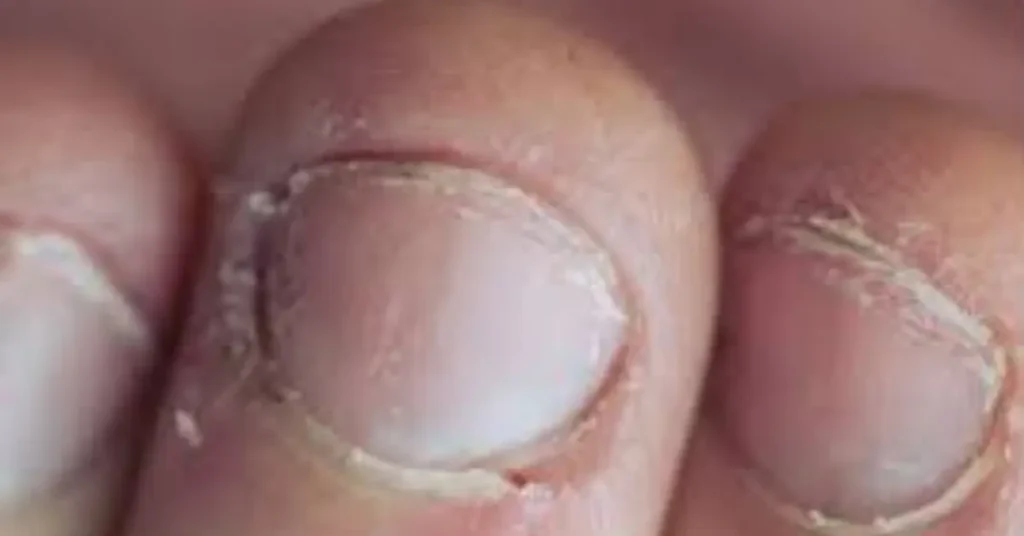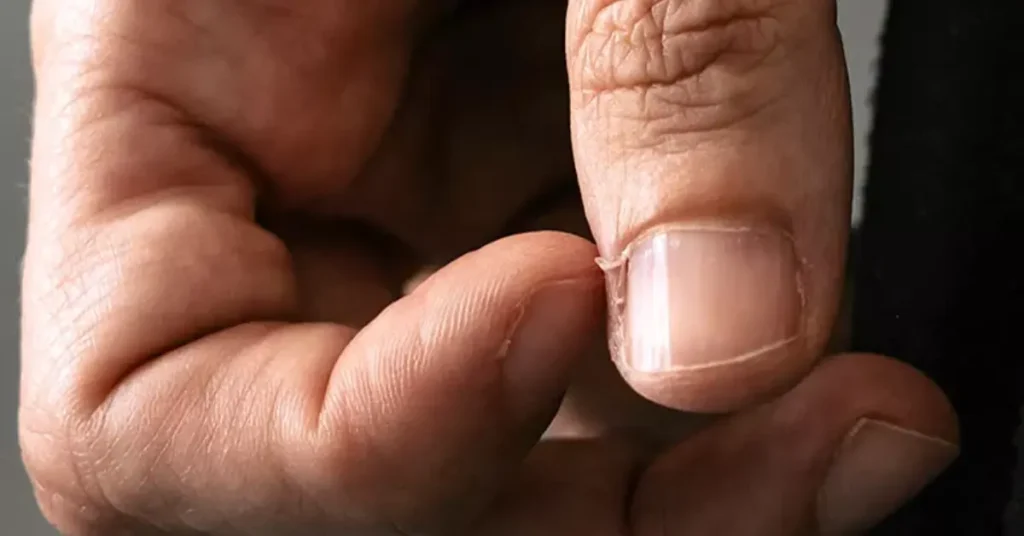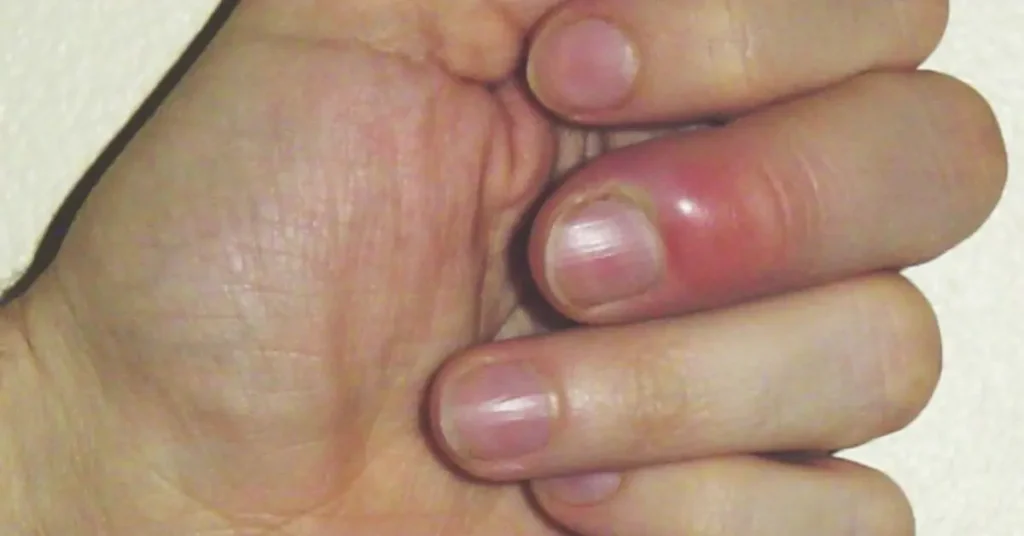Cuticles are small sections of skin located at the base of the nails and play a pivotal role in your nail health. They consist of multiple layers of skin that are deposited to form a guarding barrier, protecting the delicate area where the nails grow. How do you keep your nails looking flawless and healthy? Dive into our comprehensive guide on cuticles to discover the secrets to maintaining strong, beautiful nails. Explore our practical tips and transform your nail care routine today!

Table of Contents
What are cuticles?
Cuticles are the thin, transparent subcaste of skin at the base of nails, forming a defensive hedge that seals the nail plate. This girding nail fold, or eponychium, is composed of dead skin cells and keratin.
Functionally, cuticles play an important role in maintaining nail health by guarding the delicate tissue beneath the nail from bacteria, fungi, and pathogens. They also help regulate humidity levels, keeping the nail hydrated and soft, thus preventing dry and brittle nails.
By covering the nail matrix, cuticles ensure the formation of new nail cells, promoting healthy nail growth while protecting from external factors.
Cuticle Medical Definition
In medical terminology, the cuticle, or eponychium, primarily serves as a protective barrier for the nail matrix, where the growth of nails starts. Imagine the cuticle as a protective barrier, preventing bacteria and debris from entering the body, especially during tasks like chopping a meal.
Why is Cuticle Care Important?
- Cuticle care is a vital aspect of any nail service.
- Proper cuticle care is crucial for nail enhancements like gel polish.
- Achieving a perfect manicure that lasts longer without lifting is dependent on good cuticle care.
- Products adhere better to a clean nail surface, which is enhanced by pushing back the cuticles.
- Pushing back the cuticles helps elongate the nail plate, providing more space for painting or applying nail extensions.
- Using a cuticle pusher after your nails have been soaked in warm water helps to soften the cuticles.
- From my personal experience, proper cuticle care ensures that my nail services are perfect and durable.
The function of cuticles
- The function of cuticles involves several important roles in maintaining the health and appearance of nails.
- Cuticles serve as a barrier for protection, forming a natural hedge by sealing the area around the nail plate and girding the skin of the nail fold or eponychium.
- They prevent bacteria, fungi, and pathogens from entering the nail bed, reducing the threat of infections such as paronychia and fungal nail infections.
- Cuticles create a defensive seal, which is a pivotal part of securing the delicate tissue beneath the nail and maintaining its health and integrity.
- They play a vital role in regulating humidity levels within the nail unit, helping to seal humidity and prevent the nail from becoming dry, brittle, or prone to cracking and damage.
- Cuticles facilitate humidity absorption, keeping the nail soft and less susceptible to breakage and infection.
- They support nail growth by guarding the nail matrix at the base where new nail cells are produced, shielding it from external damage and trauma.
- The care of cuticles promotes stronger, healthier nail growth and maintains the integrity, strength, and adaptability of the nail plate as it grows.
- In my experience, diligent cuticle care is essential for conserving the overall health and appearance of nails.
Caring for your cuticles
- Caring for cuticles is an essential part of maintaining healthy nails.
- Proper cuticle care keeps them moisturized, preventing damage and reducing the threat of infections.
- Tips for minding cuticles:
- Be gentle to avoid harsh treatment, like picking or causing vexation that can lead to inflammation and infection.
- Gently push cuticles back after a shower or bath using a soft cuticle pusher or a soft kerchief, applying minimal pressure.
- Hydration:
- Keep cuticles doused by applying a nutritional cuticle oil or cream regularly.
- Massage the oil or cream into cuticles and nails to moisturize and soften them, promoting healthy growth and preventing blankness and cracking.
- Avoid over-trimming or cutting cuticles exorbitantly to prevent increasing the threat of infection and damage to the nail bed.
- Trim only loose or overgrown pieces of cuticle with a cuticle nipper.
- Protection:
- Wear gloves during household chores or when using harsh chemicals to prevent dehumidification.
- Apply a defensive hedge like petroleum jelly to protect nails and cuticles.
- Regular conservation of cuticles should be part of your nail care routine:
- Moisturize cuticles daily and gently push them back during or after bathing.
- Regular manicures and nail treatments also help keep cuticles in good condition.
- Following these tips maintains the health and appearance of strong, healthy nails, free from blankness, cracking, and infections.
Based on my experience, these practices are crucial for achieving and maintaining healthy nails.
Addressing common cuticle concerns
Addressing common cuticle concerns is essential for maintaining overall nail health and appearance. Some tips for dealing with these common cuticle enterprises include regular moisturizing and using gentle tools after softening the cuticles.
Dry, cracked cuticles

Dry, cracked cuticles are among the worst effects, both visually and painfully. To heal cuticles and nails quickly, use a combination of anti-inflammatory, antibiotic, and pain-relieving creams to reduce trauma. Factors like cold weather, water exposure, harsh chemicals, and inner heat dehumidification contribute to dry, weak, and brittle cuticles. Applying a liberal amount of nail restorative cream daily, alongside a nutrient and mineral-rich cuticle oil or serum, and massaging gently helps create a healthy nail environment and promotes nail growth.
Hangnails

Hangnails are pesky bits of torn skin around the nails that can be both painful and unsightly. To treat hangnails effectively, avoid the temptation to pick or bite them, as this can worsen the problem and lead to infection. Keeping your cuticles moisturized prevents dry, brittle skin, which contributes to hangnail formation. If you develop a hangnail, resist the urge to tear it; instead, use clean, sharp cuticle trimmers to trim it close to the base and apply soothing cuticle oil or cream to promote healing and prevent irritation.
Infected cuticles

Infected cuticles can be extremely painful and often require medical attention. Signs of an infection include redness, swelling, and pain. Consulting a healthcare provider is essential to diagnose and treat the infection with antibiotics or topical antifungal medications. Conditions like paronychia, a common nail infection caused by bacteria entering through cuts or broken skin in the cuticle or nail fold, can lead to severe health problems if untreated. From my experience, keeping cuticles moisturized and avoiding harsh chemicals helps maintain optimal cuticle health and prevent infections.
How to Remove Cuticles
- Use a cuticle remover containing low-pH acid to soften and dissolve dead skin cuticles.
- Follow the instructions on the cuticle remover for safe usage, as leaving it on for too long can damage the tissue in the nail bed.
- An alternative is to use a cuticle softener which, without acid, softens cuticles for removal.
- After using these products, employ a soft cuticle pusher to gently push back the cuticle.
- Soaking your hands in a mixture of warm water and cuticle oil provides a chemical-free alternative to over-the-counter removers.
- Cuticle oils made from vegetable oils and enriched with vitamins can be applied routinely for healthy nails and cuticles.
From personal experience, combining a cuticle remover with regular application of cuticle oil ensures the best results for maintaining the health and appearance of my cuticles and nails.
Properties of Cuticles in Human Anatomy
- The properties of cuticles in human anatomy showcase their unique complexity within our bodies.
- Cuticles act as a protective layer preventing bacterial and fungal infections.
- They provide flexibility to nails through their elastic nature.
- This protective barrier prevents the entry of bacteria and fungi, shielding the nail matrix.
- The elastic quality allows nails and skin flexibility without tearing.
- Cuticles support nail growth and structure, aiding the growth process.
- A significant role in understanding the intricacies of cuticles is crucial for nursing education.
- A comprehensive understanding of their elements ensures efficient practice and successful procedures without complications.
From my personal experience, recognizing these properties has greatly improved my nail care regimen and treatment approaches.
Importance of Cuticle in Nursing
In nursing, learning and understanding the structure and details of the cuticle is pivotal for effective patient care, especially for treating hands and feet and preventing conditions like infections. Correct knowledge of cuticle health greatly informs the care of various conditions.
Role of Cuticle in Patient Care
- Cuticles play an integral role in patient care by contributing to hygiene and preventing infections.
- The protective barrier of the cuticle safeguards the nail matrix, which is highly susceptible to infections.
- Nurses must ensure that a patient’s cuticles remain intact, avoiding rough handling and injuries that could cause tearing.
- For instance, when a patient’s arm is in a cast, it’s crucial to monitor the condition of their hands and cuticles regularly, watching for abrasions or cuts that could lead to infections and complicate their health situation.
- Nurses need proper knowledge of cuticle care to appropriately tend to a patient’s hands, aiding in healing and minimizing complications.
- Routine patient care activities like bathing, changing dressings, and handling a patient’s hands and feet benefit from a thorough understanding of the importance of cuticles.
- Example: Regularly check a patient’s hands for any signs of cuts or abrasions, especially if they are immobile or have a cast, to ensure no cuticle infections develop.
In my experience, focusing on cuticle care in these situations not only improves the care process but also enhances patient comfort while significantly reducing the risk of infections.
Cuticle Management Techniques for Nurses
- Understand the Cuticle’s Role:
- Acknowledge the importance of cuticles in preventing bacterial and fungal entry.
- Gentle Handling:
- During care procedures, avoid aggressive pushing back and trimming to protect the nail matrix.
- Implement gentle handling techniques to reduce the risk of infections.
- Moisturize Regularly:
- Keep cuticles moisturized with a good moisturizer or oil to keep them pliable and prevent cracks and peels.
- Regular moisturizing helps maintain healthier, intact cuticles.
- Avoid Metal Tools:
- Refrain from using metal tools that can cause separation of the cuticle from the nail plate, increasing the risk of infection.
- Best Practices:
- Follow cuticle management techniques diligently to bolster patient care.
- Understand and apply these techniques as part of the best practices for becoming an accomplished nurse.
Based on my experience, integrating these steps into both personal hygiene and patient care routines ensures better management, healthier cuticles, and an overall reduced risk of complications.
Identifying Cuticle Disorders
- Understand Normal Cuticles:
- Develop a basic understanding of what normal, healthy cuticles look and feel like.
- Example: Healthy cuticles are similar to the smooth, vibrant skin of a fresh colorful fruit like an apple.
- Observe for Hangnails:
- Hangnails are tiny bits of skin that peel off the sides of the cuticles. Although harmless, they have the potential to get infected, leading to cuticle inflammation.
- Example: If you notice tiny bits of skin peeling off, avoid pulling or biting them to prevent infection.
- Look for Signs of Inflammation:
- Monitor for inflamed cuticles characterized by redness, swelling, and pain—signs of cuticle damage or conditions like paronychia.
- Example: If your cuticles are red, swollen, and painful, consider seeking medical attention for early treatment.
- Check for Colour and Texture Changes:
- Observing visible changes in color and texture at the edge of your nails can be the first step in identifying potential cuticle disorders.
- Example: Rough texture or a dull appearance of cuticles can indicate that they aren’t in the best condition.
- Monitor for Serious Conditions:
- Be vigilant about the physical state of your cuticles to spot early signs of serious conditions that necessitate medical attention.
- Example: Paronychia often results from an infection due to biting, pulling, or trimming hangnails and requires prompt care to avoid complications.
By following these steps and my personal experience of regularly monitoring and promptly addressing abnormalities, you can effectively prevent major complications and keep your cuticles in optimum health.
Preventative Measures for Maintaining Healthy Cuticles
- Appropriate Manicuring:
- Use proper techniques such as careful cutting, trimming, and pushing back cuticles to avoid damaging the nail matrix and preventing exposure to infectious agents.
- Regular Moisturising:
- Keep cuticles moisturized to prevent drying and cracking.
- Use oils like jojoba and almond oil, or rich creams to ensure cuticles remain supple and form a barrier against infections. Applying cuticle oil daily, especially after washing hands, helps maintain hydration.
- Avoid Improper Techniques and Habits:
- Avoid improper manicuring and habits like biting nails or picking cuticles, which can serve as a gateway for infections. Engage in regular habits of gentle care rather than aggressive trimming or biting.
- Proper Nutrition:
- Maintain a balanced diet that includes essential nutrients for healthy cuticles such as protein, Omega-3 fatty acids, Vitamin E, and biotin. Incorporate foods like nuts, seeds, and leafy greens into your diet to nourish cuticles.
- Adopting Simple Habits:
- Incorporate simple, effective habits into your routine to play a critical role in the overall health of your cuticles. Regularly applying a thick cuticle cream before bed helps prevent cuticle disorders and keeps them in top condition.
These preventative measures, from my experience, not only foster strong and healthy cuticles but are also foundational practices for both personal hygiene and improving patient care in nursing.
Conclusion
In conclusion, understanding and caring for your cuticles is essential for maintaining nail health and preventing infections. Regular moisturizing, gentle handling, and proper nutrition are key practices that support healthy cuticles and contribute to the overall appearance and strength of your nails. By integrating these care techniques into your routine, you can achieve strong, beautiful, and resilient nails.
FAQ,s
What is the function of the nail cuticle?
The cuticle forms an essential seal at the proximal nail fold, and its delicate stratum corneum layer prevents pathogens, allergens, and irritants from entering the potential space around the eponychium, protecting the nail plate and distal skin of the digit from harm through its extension.
What is the cuticle in anatomy?
The cuticle is the outer layer of the epidermis in humans and other organisms, including invertebrates like arthropods, where it is a dead, noncellular structure often secreted by the epidermis and composed of chitin and pigments, serving as a protective part in direct contact with the environment.
